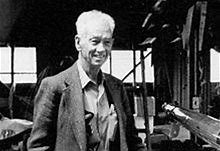By Larry Clinton, Sausalito Historical Society
The recent news that the infamous Forbes Island has been resurrected in the Delta reminded me that its visionary builder, Forbes Kiddoo, got his start fabricating concrete barges for Sausalito floating homes.
Most of those barges measured no more than 20 by 40 feet, but one day Forbes got the inspiration to build one 100 feet long and 50 feet wide — and to turn it into a floating island. He launched the island in 1980, complete with palm trees growing out of tons of topsoil, a sandy beach and underwater viewing ports à la Captain Nemo.
In 1987 The Historical Society’s Annie Sutter penned a glowing description of the island’s décor in this paper:
“Forbes has built it with exquisite attention to detail from the main salon with its long bar, fireplace, inlaid table, chandeliers and candelabra to the five staterooms. The interior glows with polished woods, bronze, stained glass, mirrors and Oriental rugs. And he has a collection of nautical artifacts and marine paintings that would make a maritime museum salivate.”
But by then Forbes had run afoul of the Bay Conservation and Development Commission, which tagged the island as illegal Bay fill, and ordered it removed from Richardson’s Bay. Forbes fought the good fight for years until the BCDC agreed that if he installed a motor on the island, they would reclassify it a vessel and allow him to move it.
During this time, in the early 90s, I had the pleasure of serving Forbes drinks, first at the no name, and then across the Bay where he was having the engine installed in Richmond. As a bartender, I appreciated that when Forbes drank, everyone at the bar drank, enjoying his quips and atrocious puns.
When fitted out with a motor and 42-foot propeller in 1991, “the island chugged over to Antioch under its own steam, as it were, instead of having to be towed,” according to the Petaluma Argus Courier. Forbes told the paper that his island traveled at 22 knots, “not exactly America's Cup material, but impressive anyway.” He boasted, "It's the world's record for a floating island.”
After several stops outside the BCDC’s jurisdiction, Forbes remodeled his island into a fine dining restaurant, and berthed it off Pier 39 in 1999.
The San Francisco Chronicle reported: “The restaurant was as adored as it was snubbed (its reviews on Yelp spanned the spectrum), while serving as a wedding venue and tourist attraction for those who appreciated its novelty. Tony Bennett was a fan and once performed in the vessel’s wine cellar.”
In 2010, I booked the restaurant’s private Sea Lion room for my wife Jane’s birthday (don’t ask which one!). Forbes himself ferried us out to the island in a launch ominously named Titanic. But when we arrived, we found that the sea lions had deserted their nearby post. Seems the ocean and bay had become unusually warm, forcing their favorite prey to travel farther and deeper to feed, and the sea lions had followed suit. Later I learned that the largely bachelor colony of Pier 39 sea lions was seasonal, coming and going to breed and feed as they saw fit.
By 2017, said the Chronicle, “maintaining a kitschy floating restaurant in the San Francisco Bay became too costly (the barge’s steel shafts, called spuds, which hold the deck together, continually broke) and Kiddoo decided to close the business for good.” After 17 years in business, Forbes shuttered his restaurant in 2016 and retired at the age of 79. Once again, the island was moved around Suisun Bay and the Delta.
Then in 2018 a Bay Area man gathered a group of nautical radicals, including a landowner in the Delta, and formed a holding company called Seastar Marine to purchase the vessel from Kiddoo. They have relaunched it as an event venue located at Bradford Island in the San Joaquin River. Forbes, who passed away shortly after the sale at age 81, would be pleased to know that people are still enjoying his one-time home and showcase.
COURTESY PHOTO
Forbes Island finds a home in the Delta.




















